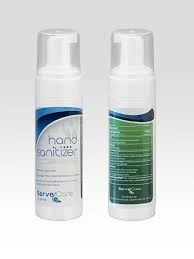dodecyl dimethyl benzyl ammonium chloride
The Versatile Applications of Dodecyl Dimethyl Benzyl Ammonium Chloride
Dodecyl dimethyl benzyl ammonium chloride (DDBAC) is a quaternary ammonium compound known for its surfactant properties and antimicrobial activity. This compound has gained significant attention in various industries due to its effectiveness as a disinfectant, emulsifier, and wetting agent. Understanding its characteristics, applications, and safety considerations can provide valuable insights into its pivotal role in modern formulations.
Chemical Properties and Structure
DDBAC is a cationic surfactant with a long hydrophobic dodecyl chain, which imparts excellent wetting and emulsifying properties. The benzyl and dimethyl groups enhance its stability and solubility in various solvents. This unique structure enables DDBAC to interact effectively with both water and oil-based substances, making it a versatile ingredient in many formulations. Its ability to reduce surface tension is particularly beneficial in cleaning products, where it enhances the penetration and distribution of the active ingredients.
Applications in Household and Industrial Products
One of the most common applications of DDBAC is in household cleaning products. As an antimicrobial agent, it is effective against a broad spectrum of pathogens, including bacteria, fungi, and viruses. This property is crucial in formulating disinfectants and sanitizers that are essential for maintaining hygiene in homes, hospitals, and food processing environments. Its inclusion in formulations helps to mitigate the spread of infectious diseases, especially in high-traffic areas.
In addition to its role in disinfectants, DDBAC is widely used in the personal care industry. It is commonly found in shampoos, conditioners, and skin care products due to its conditioning properties. The compound helps to enhance the texture and feel of hair and skin, making it a preferred choice for formulators seeking to improve product performance.
dodecyl dimethyl benzyl ammonium chloride

The agricultural sector also benefits from DDBAC. It can be used as a surfactant in pesticide formulations, improving the spreading and adherence of the active ingredients on plant surfaces. This ensures more effective pest control and contributes to higher agricultural yields. Its role as a wetting agent helps to reduce runoff and improve the efficacy of the applied pesticides, making it an invaluable component in sustainable agriculture practices.
Safety and Environmental Considerations
While DDBAC has many beneficial applications, safety considerations are paramount. As a cationic surfactant, it can be harmful to aquatic life if released into water bodies in significant quantities. Therefore, manufacturers are encouraged to adhere to safe handling practices and implement measures to minimize environmental impact during production and usage.
Regulatory bodies have established guidelines to ensure the safe use of DDBAC in consumer products. In addition, ongoing research focuses on understanding the long-term effects of exposure to quaternary ammonium compounds. As consumers become increasingly aware of the potential impacts of chemical substances, the demand for eco-friendly alternatives and safer formulations is growing. Hence, researchers are exploring biobased alternatives to DDBAC that maintain its effectiveness while reducing environmental risks.
Conclusion
Dodecyl dimethyl benzyl ammonium chloride is a multifaceted compound that plays a critical role in various sectors, including cleaning, personal care, and agriculture. Its unique chemical properties allow it to function as an effective disinfectant, surfactant, and emulsifier. While its applications are extensive, it is essential to acknowledge and address the safety and environmental concerns associated with its use. As the industry evolves, the focus on sustainable practices and safer alternatives will undoubtedly continue to shape the future of compounds like DDBAC, ensuring that they can be used responsibly and effectively in our daily lives.
-
Water Treatment with Flocculant Water TreatmentNewsJun.12,2025
-
Polymaleic AnhydrideNewsJun.12,2025
-
Polyaspartic AcidNewsJun.12,2025
-
Enhance Industrial Processes with IsothiazolinonesNewsJun.12,2025
-
Enhance Industrial Processes with PBTCA SolutionsNewsJun.12,2025
-
Dodecyldimethylbenzylammonium Chloride SolutionsNewsJun.12,2025





